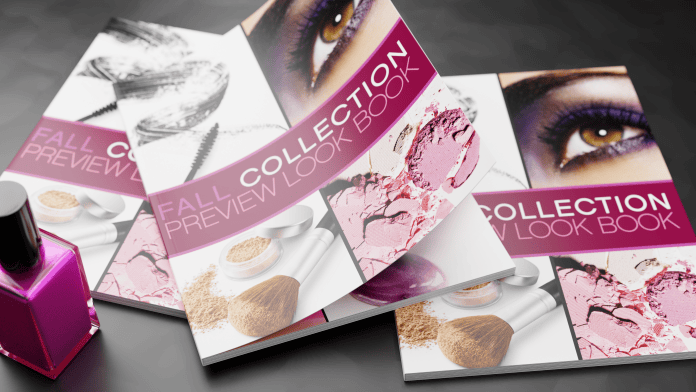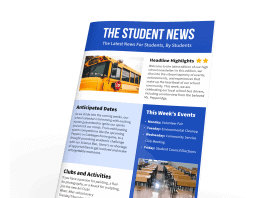Booklets offer an accessible and versatile way to share information in a compact format. Whether you’re looking to showcase a product, provide detailed tips on a topic, or create a memorable event program, a booklet can do it all!
What is a booklet, and what are they used for? How many pages are in a booklet? In this blog post, we’ll explain all there is to know about booklets and explore how you can customize them with Printivity to fit your specific needs. Let’s dive in and see how a small book can make a big impact.
What are Booklets?
What is a booklet? Simply put, a booklet is a small book. Booklets fill the gap between brochures and actual books. They’re great as instruction manuals, product showcases, advertisements, business pitches, travel guides, and more.
But what does a booklet look like? This can vary, but the standard measurement is 5.5 inches by 8.5 inches. Booklets usually contain between 8 and 36 pages and are commonly saddle-stitched, although they can be bound in other ways.

Booklet vs. Book: What’s the Difference?
Now that we understand what a booklet is, let’s compare it to its larger cousin — the book.
A book and a booklet are quite similar, and not just by name. They share the same purpose: to pass on information, share ideas, and tell stories. They’re also formatted similarly — printed pages bound together with a cover.
However, the booklet/book similarities end there because each has different functions and physical characteristics, making them suitable for different tasks.
Physical Differences between Booklets and Books
Size is the main difference in the booklet vs. book debate. Other differences include page count, binding, and cover type.
- Size: The standard measurement of a booklet is 5.5 inches by 8.5 inches, both in portrait and landscape formats. A book, on the other hand, typically measures 8.5 inches by 11 inches.
- Page count: A booklet has between 8 to 36 pages. But when the page count exceeds 36, it becomes a book.
- Cover type: The cover of a booklet is either soft (the cover page is thicker than the inner pages) or a self-cover (the inner pages and cover pages are made of papers of the same thickness). In comparison, a book typically has thicker covers than the inner pages. These covers are either thick cardstock paper cover or hardcover.
- Binding: Saddle stitch is the most common binding used for booklets. On the other hand, books are more often bound in other different styles like perfect binding, spiral binding and wire-o binding.
Aside from these, compared to books, booklets are easy to carry around. They can even be mailed easily, distributed for promotional purposes, or packaged in addition to other items.
When to Choose a Booklet Over a Book
Now that you know the differences between booklets and books, when should you choose a booklet?
Choosing between a booklet and a book comes down to three things:
- The purpose of the information you’re trying to pass on
- The audience of said information
- Your budget
A booklet is the best choice if you’re looking to share brief, focused information — like a sales pitch, a product catalog, or an instructional manual. Booklets are designed to be easily skimmable, so they’re perfect for passing concise and straightforward information. Plus, the compact size of booklets makes them easy to distribute to a targeted audience, like potential investors, customers, or event attendees.
On the other hand, if you’re creating a detailed resource with extensive explanations, a book might be more suitable.
A booklet is also a great choice if you’re working with a tight budget. It’s significantly more cost effective than printing a full book. Booklets can be used instead of books for short print runs, small-scale events, or limited-time productions. For example, a non-profit organization can use booklets to spread awareness about a topic.
Customizing Your Booklet
Booklets leave plenty of room for creativity and personalization in their design. They can be easily tailored to specific needs and requirements. Booklets can also be made in different sizes, viewing dimensions, and binding styles to fit any purpose. Reputable custom printing services like Printivity offer a range of customization options to ensure you have the perfect booklet for any occasion.
Booklet Sizes and Dimensions
There are two standard booklet sizes for printing:
- 5.5″ × 8.5″: This standard booklet size is perfect for creating product catalogs and promotional material. It’s easy to carry around and reference and fits in a standard envelope for mailing.
- 8.5″ × 11″: This is a booklet size that’s the same size as a book, but the page count makes it a booklet. Booklet dimensions such as this create more space for detailed images and text, making it ideal for company reports and instructional manuals.
Binding Options
Booklets are most commonly bound with the saddle stitch method. Other binding options include the perfect bound, spiral bound, and wire-o methods.
- Saddle Stitched: The saddle-stitch method involves binding the pages of a booklet together using several staple bullets. It’s fast and cost-effective, making for a neat finish that’s ideal for magazines, catalogs, and brochures.
- Perfect Bound: In perfect binding, the pages of the booklet are clamped and glued at the spine before they’re wrapped in a soft cover. This gives a professional finish and an additional customizable edge, perfect for lookbooks, portfolios, and magazines.
- Spiral Bound: To spiral bind booklets, one edge of the pages is perforated and held together using a plastic coil that’s twisted through the holes and securely crimped at the ends. The pages of a spiral-bound booklet can move 360 degrees and independently of each other, making them ideal for work manuals.
- Wire-O: Similar to the spiral bound method, wire-o binding uses a double metal coil twisted through perforated pages to hold the booklet together. The double-wire loop is durable and neat, ideal for sales catalogs, business reports, and manuals.
Elevate Your Project with Printivity’s Premium Booklets
Looking to create the perfect booklet? Leave it to Printivity! With our expert craftsmanship, we use only the best materials to create crisp, well-bound booklets that truly stand out.
Ready to make magic? Contact Printivity booklet printing services today. We’ll help you bring your visions to life to make the impact you desire!




